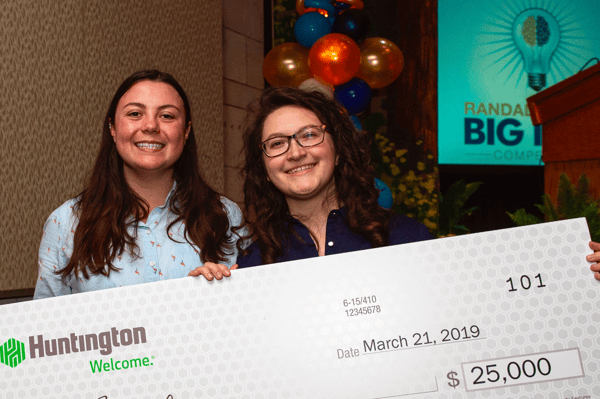There is a paradox in innovation. Many new products fail. Studies by Nielsen and Harvard Business School estimate this to be between 85% and 95%. At the same time, a 2016 study by Lab42 showed that 84% of people say it is important to buy from innovative companies and nearly 70% of people expect innovation to improve society. As a coach and mentor to student innovators, students often ask, “Do you think my idea is a good one?”

What about your Big Idea?
There is a paradox in innovation. Many new products fail. Studies by Nielsen and Harvard Business School estimate this to be between 85% and 95%. At the same time, a 2016 study by Lab42 showed that 84% of people say it is important to buy from innovative companies and nearly 70% of people expect innovation to improve society.
As a coach and mentor to student innovators, students often ask, “Do you think my idea is a good one?”
My first answer always is, “Only a potential customer can give you that answer. So, let’s create a plan for you to talk to them.” But, what I can do is share my observations from being involved with hundreds of innovation projects throughout my two-decade business career.
First observation. Building a great company, while related, is not the same as just having an idea. Building a great company involves many stakeholders, funding, assembling the right team, and often simple, good old-fashioned luck. For many reasons, sometimes great ideas just don’t become great companies. However, I firmly believe that great companies can only succeed if there is a Big Idea at the foundation.
Second observation. A Big Idea fills a real customer need. A need someone is willing to pay to solve, a need that is at the top of someone’s priority list. At the core of every conversation is always a student or innovator passionate about their idea and hoping to change the world with it. But, it takes many more steps to define the problem with details sufficient to create a solution providing benefits. Benefits come in many ways – faster, simpler, better quality, cheaper…or simply fun or eye-catching.
Third observation. Markets are complex. Decision makers and users are often disconnected and have conflicting incentives. Think… doctors, patients and insurance companies. Patients want the best possible care for their loved ones; doctors want to maximize revenue by providing as many services as possible; and insurance companies want to keep costs low. Navigating these complexities can be difficult, but Big Ideas enable everyone in the value chain to win in some way.
Fourth observation. Commonly the solution to the problem, the Big Idea itself just falls flat. The solution may be hard to implement or creates risk for the customer. The benefits may not be easily realized and measured, or the price is simply beyond the customer’s willingness or ability to pay.
A Big Idea grabs the customer’s attention immediately. Big Ideas are both NOVEL and USEFUL. Novel solves the problem in a way that hasn’t been done before. Useful is practical, easily implemented and provides obvious benefits.
Creating a novel and useful solution will go a long way to helping your Big Idea will stand out and set the foundation for you to be successful.
-Joanna Sutton
 Joanna is a Business Innovation Advisor with Brights Lights Innovations helping small businesses create profitable growth with accelerated times to market. Since 2007, she held various B2B Marketing Executive roles with Westinghouse Electric Company. She helped create numerous business opportunities leveraging a range of advanced technologies. Joanna’s specific expertise includes business model design, product concept development, financial planning, and partnerships with early-adopter customers. Joanna has collaborated with a number of educational organizations on the cutting edge of marketing and innovation, including Rensselaer Polytechnic Institute, The Institute for the Study of Business to Business Markets (the only B2B Think Tank) at Penn State’s Smeal College of Business, and the International Center for Studies in Creativity at Buffalo State. She has a BA from Indiana University of Pennsylvania.She also earned a Lean Six Sigma Master Black Belt certification.
Joanna is a Business Innovation Advisor with Brights Lights Innovations helping small businesses create profitable growth with accelerated times to market. Since 2007, she held various B2B Marketing Executive roles with Westinghouse Electric Company. She helped create numerous business opportunities leveraging a range of advanced technologies. Joanna’s specific expertise includes business model design, product concept development, financial planning, and partnerships with early-adopter customers. Joanna has collaborated with a number of educational organizations on the cutting edge of marketing and innovation, including Rensselaer Polytechnic Institute, The Institute for the Study of Business to Business Markets (the only B2B Think Tank) at Penn State’s Smeal College of Business, and the International Center for Studies in Creativity at Buffalo State. She has a BA from Indiana University of Pennsylvania.She also earned a Lean Six Sigma Master Black Belt certification.